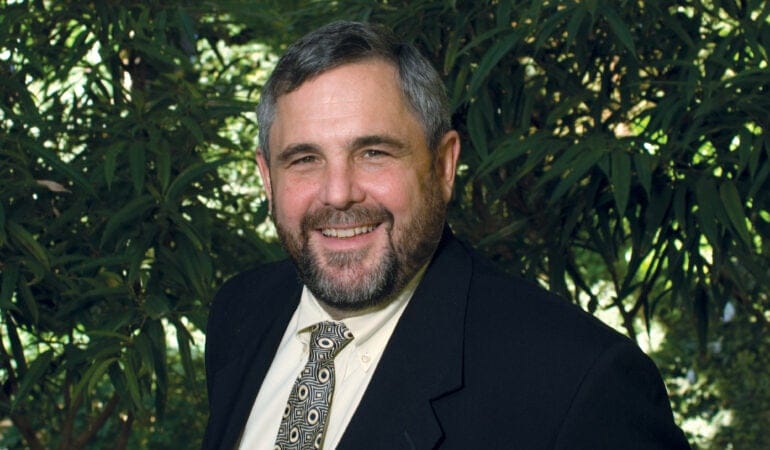The single greatest challenge to any type of land value taxation system is accurate valuation of land on a large scale. In urban areas where nearly all real estate sales data represent transfers of land with improvements, it is difficult to divide prices between land and building components. Although many jurisdictions require a separate listing of land and building values on their tax rolls, these allocations will not affect the final tax bill if the tax rate is the same on both.
Any special tax on land value alone would increase the need to assign more accurate land values to parcels that have been improved over many years. As a result, skepticism as to the feasibility of this process has proven a major stumbling block to serious consideration of two-rate property taxes and other forms of special land taxation. Many observers have concluded that the practical problems of land assessment prevent the realization of the many theoretical benefits it offers.
New advances in computerized approaches to property assessment have important implications for this debate. While land valuation presents special problems in the analysis of sales data for improved parcels, it also can benefit from location analysis and land value mapping techniques. Buildings can and will vary unpredictably in both type or value from lot to lot, but land values for adjoining or nearby parcels should have a more constant relationship to one another. More than 20 years ago, Oliver Oldman of Harvard Law School, considered the implications of this situation for an appeals process under a land value tax, recognizing that a successful challenge to one parcel’s valuation would have implications for many other assessments as well. He wrote, “The key to developing an accurate land-value assessment roll is the process of land-value mapping.” Now the technology is available to achieve this goal.
In a recent seminar at the Lincoln Institute, representatives of the Auditor’s Office in Lucas County, Ohio, which includes the city of Toledo, joined a group of economists, appraisers, lawyers and local officials to examine current methods of land valuation. Lucas County has one of the most sophisticated appraisal systems in the country, with almost 20 years of experience in using computerized methods of spatial data analysis for property taxation. The seminar provided a valuable opportunity to discuss the county’s innovative approaches to the integration of geographic information systems and computer-assisted land valuation to estimate the effect of location on real estate market value.
Traditional Methods of Land Valuation
There are several standard methods of deriving a value for unimproved land, all extremely problematic as the basis for jurisdiction-wide assessment.
Comparable Sales: The most straightforward method is an analysis of sales of comparable unimproved land, adjusting the prices to account for any differences in size, location, and features. Similarly, the capitalization of rental income for comparable vacant land can serve as a basis for estimating its sale price. However, these methods are difficult to apply in densely populated urban areas where sales or rentals of unimproved land are rare. The pool of sales data can be expanded if sales of improved land are followed soon after by demolition of the buildings. In that case, the unimproved land value can be estimated as the purchase price minus the costs of the demolition. Although such sales provide an important check for estimated values produced by other approaches, they do not exist in sufficient numbers over a varied enough geographic range to serve as the sole basis for assessment.
Income Analysis: The land residual method begins with an estimate of the income yielded by the developed property. The building value is then calculated, and from that the income attributable to the building is derived. Capitalizing the remaining income then provides a value for the land. However, even a cursory description of this method suggests the difficulties of its application. In particular, the existence of depreciation, or any deviation from highest and best use that would distort the income available to the unimproved land, can leave the independent value of the improvements extremely uncertain.
Cost Analysis: Similar problems confront a division of value according to the depreciated reproduction cost of the improvements. This method assumes that structures can be worth no more than their cost of construction, and assigns all remaining value in the improved parcel to the land itself. Physical, economic or functional depreciation greatly complicates the attempt to calculate building value, however, so this method requires fairly new construction whose price can be confidently estimated as a measure of value. The financial effect of various forms of obsolescence can only be measured accurately through examination of sales data, which will almost never be available for the building alone.
Cost of Development: A full-scale market appraisal of potential development alternatives provides another basis for estimating the sale price of unimproved land. This is the approach taken by developers considering new uses for land, land trusts seeking to acquire and preserve undeveloped open space, and taxpayers claiming deductions for charitable contributions of development rights. However, it is most suitable for valuing undeveloped land to be used for residential subdivisions. Even in these situations, it requires extensive study of the potential market for such properties, local restrictions on development, and the physical attributes of the land that would affect its building capacity, such as soil and drainage characteristics. This type of exhaustive individual appraisal is appropriate for purchasers or developers of individual parcels, but is not feasible for annual assessments for all parcels in a taxing jurisdiction.
Other valuation methods, such as derivation of typical ratios of site value to total improved property value, are even less useful in the case of densely developed urban property, where buildings of all sizes, ages and utility may be found in close proximity on fairly similar parcels of land.
New Approaches: CAMA and GIS
The greatest change in assessment practice over the past three decades has involved the use of computers and mathematical formulas to establish a relationship between property characteristics and sale prices, thereby permitting an estimate of the market value of other properties not subject to a recent sale. This approach is known as computer-assisted mass appraisal (CAMA). Site characteristics such as size and location are important elements of these mathematical models, raising the possibility of estimating the effect of location on parcel value.
At the same time, the development of computerized geographic information systems (GIS) has permitted assessors to develop location-based property records or cadastres, and to coordinate sales data with location. More sophisticated and less expensive GIS technology now offers the potential for full integration with CAMA for spatial analysis. Initial attempts to quantify location effects faced difficulties not only in defining and maintaining “economic neighborhoods” or zones, i.e., contiguous areas of relatively homogeneous land values, but also in understanding the dynamics of the interactive, elusive locational factor. Some efforts developed different mathematical models for each geographic region or “cluster” of properties with similar characteristics. However, these approaches could not capture the many complex, interrelated and significant micro-variations within any given neighborhood, and could not reduce the determination of location value to an objective process.
Lucas County pioneered a new approach to location value-the use of GIS tools to develop a response surface that represents the effect of location on land value. The response surface is a fitted three-dimensional surface that represents a percentage adjustment to land and/or land and improvements based on a parcel’s geocoded location. Included in the analysis are geographic coordinates and distances from important features, such as other recent sales, institutions, amenities or other “value influence centers.” This analysis results in a three-dimensional representation, with the height of the surface (z) at any specific x-y coordinate indicating the approximated location value of that parcel. This variable is then evaluated with others, such as land and building size, quality, condition and depreciation, to produce a total estimated value for the parcel.
In the Lucas County example, the response surface differs from a mathematical equation in that it is developed through a spatial analysis process available in GIS to estimate the effects of location on value and refine those estimates after comparing them with sales and appraisal data. This approach still relies on an element of appraisal and economic judgment in determining neighborhood boundaries for location effects, but it can be tested and refined by observing the effect of different neighborhood “breaklines” on the resulting three-dimensional value surface.
To be used successfully in mass appraisal, these sophisticated approaches must yield results that are reasonable, understandable and available to typical taxpayers. Lucas County has pioneered this aspect of the assessment process, as well. All real estate records, values and maps are available on a CD with GIS viewing software, priced at its production cost of $10, and online free at all public libraries in the county. Taxpayers can view property records or create customized maps showing the location of multiple parcels and the relationships among their taxable values.
Future Directions
Participants in the Lincoln Institute seminar found great promise in the Lucas County approach to location value, and identified many points for further development and investigation. All agreed that recent decades have seen a literal revolution in assessment practice, with great potential for increasing the feasibility of large-scale land valuation. Among the most important theoretical questions were the “functional form” of this spatial analysis, including the type of effect on value observed with changes in location and distance variables; the identification of omitted variables (those for which data is not available or which have been overlooked in the past); and the relationship between marginal value estimates and the total parcel value needed for assessment. Similarly, the effect of substandard buildings and less than “highest and best use” on values requires further exploration.
Development of these new approaches must be matched by educational efforts to explain their operation to taxpayers, local officials, and the lawyers and judges who will consider their consistency with legal standards for assessment practice. Through its innovative efforts in both of these areas, Lucas County has made an important contribution to the theory and practice of land valuation.
Jerome C. German is the chief assessor for Lucas County, Ohio. Dennis Robinson is vice president of programs and operations at the Lincoln Institute. Joan Youngman is senior fellow and director of the Institute’s Program on Taxation of Land and Buildings.
References
International Association of Assessing Officers. Property Appraisal and Assessment Administration (1990).
Oliver Oldman and Mary Miles Teachout. “Valuation and Appeals Under a Separate Tax on Land.” 15 Assessor’s Journal 43-57 (March 1980).
Richard D. Ward, James R. Weaver, and Jerome C. German. “Improving CAMA Models Using Geographic Information Systems/Response Surface Analysis Location Factors.” 6 Assessment Journal 30-38 (January/February 1999).
Lucas County website: www.co.lucas.oh.us



